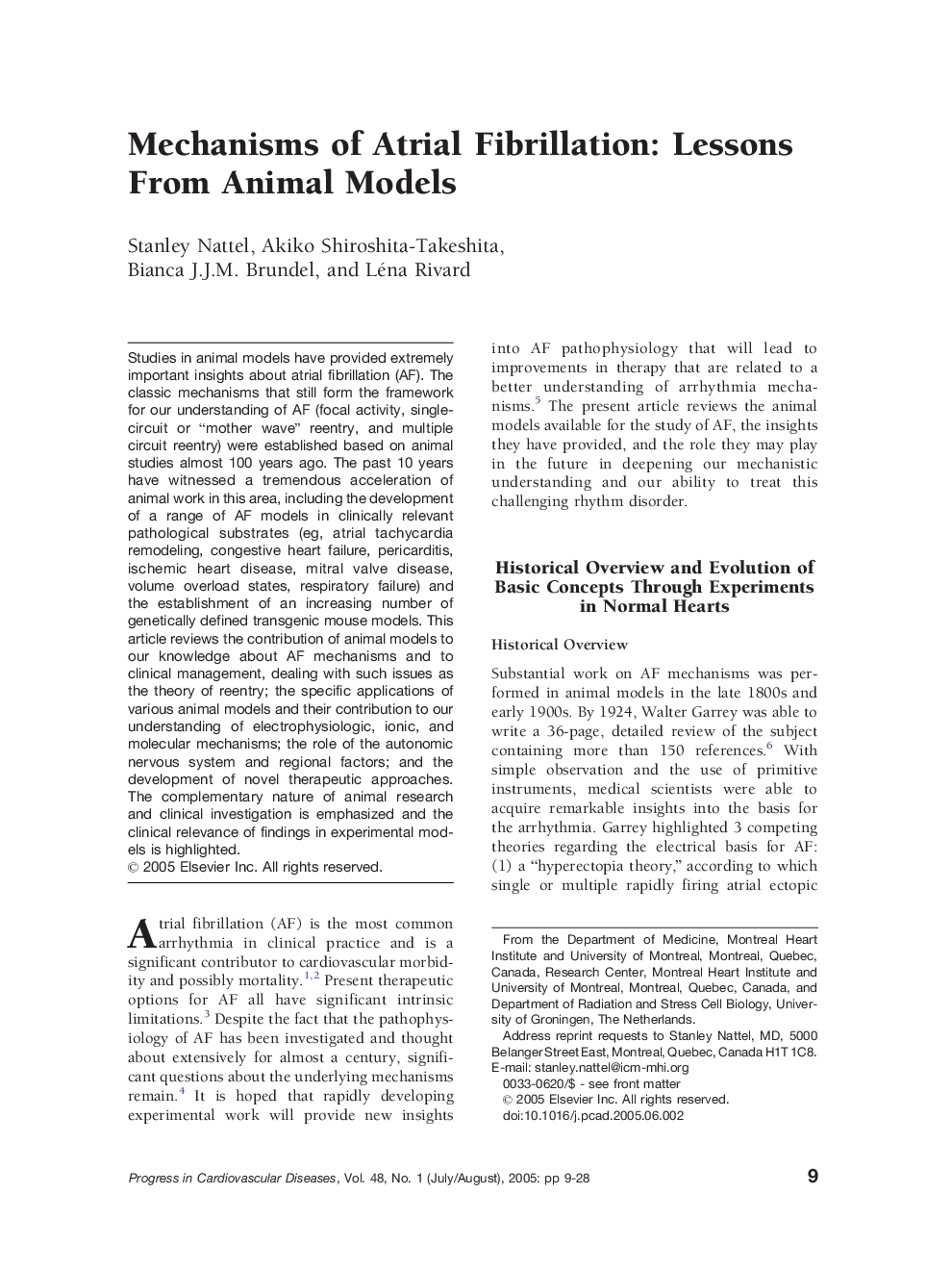| کد مقاله | کد نشریه | سال انتشار | مقاله انگلیسی | نسخه تمام متن |
|---|---|---|---|---|
| 9179001 | 1181047 | 2005 | 20 صفحه PDF | دانلود رایگان |
عنوان انگلیسی مقاله ISI
Mechanisms of Atrial Fibrillation: Lessons From Animal Models
دانلود مقاله + سفارش ترجمه
دانلود مقاله ISI انگلیسی
رایگان برای ایرانیان
موضوعات مرتبط
علوم پزشکی و سلامت
پزشکی و دندانپزشکی
کاردیولوژی و پزشکی قلب و عروق
پیش نمایش صفحه اول مقاله

چکیده انگلیسی
Studies in animal models have provided extremely important insights about atrial fibrillation (AF). The classic mechanisms that still form the framework for our understanding of AF (focal activity, single-circuit or “mother wave” reentry, and multiple circuit reentry) were established based on animal studies almost 100 years ago. The past 10 years have witnessed a tremendous acceleration of animal work in this area, including the development of a range of AF models in clinically relevant pathological substrates (eg, atrial tachycardia remodeling, congestive heart failure, pericarditis, ischemic heart disease, mitral valve disease, volume overload states, respiratory failure) and the establishment of an increasing number of genetically defined transgenic mouse models. This article reviews the contribution of animal models to our knowledge about AF mechanisms and to clinical management, dealing with such issues as the theory of reentry; the specific applications of various animal models and their contribution to our understanding of electrophysiologic, ionic, and molecular mechanisms; the role of the autonomic nervous system and regional factors; and the development of novel therapeutic approaches. The complementary nature of animal research and clinical investigation is emphasized and the clinical relevance of findings in experimental models is highlighted.
ناشر
Database: Elsevier - ScienceDirect (ساینس دایرکت)
Journal: Progress in Cardiovascular Diseases - Volume 48, Issue 1, JulyâAugust 2005, Pages 9-28
Journal: Progress in Cardiovascular Diseases - Volume 48, Issue 1, JulyâAugust 2005, Pages 9-28
نویسندگان
Stanley Nattel, Akiko Shiroshita-Takeshita, Bianca J.J.M. Brundel, Léna Rivard,